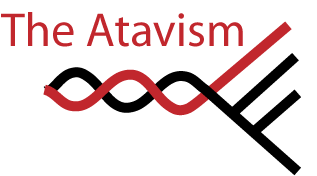Friday, June 26, 2009
Some answers on speciation
Alison at the BioBlog does a great job at bridging the gap between secondary school biology and and biological research at large. Today she has a couple of good questions from highschool students:
How do scientists know when a species finishes and a new one is formed?Are there different species in between the formation of a new species or does a, for example, Homo habilis have a Homo erectus child?
Alison provides some good answers to the questions but I thought I'd add my own thoughts since species and speciation are at the heart of my PhD research. Before we can start to ask 'when is a new species formed' we need to know exactly what it is we mean by 'species'. Sadly there is no simple answer to this question, at present there at least 26 different species concepts that have been put forward, all of which have supporters and most of which are incompatible with all the other ones. The shear volume of species concepts might suggest there isn't a single answer to what a species is. In fact, I think most of these species concepts are not <i>definitions</i> of species so much as tools that scientists use to test for evidence of a much more simple definition of species. In evolutionary biology we know how species are formed, populations of a single species stop sharing genes from each other, this means changes each new population's gene pool can't feed into the gene pool of its sister population - each population now has its own evolutionary trajectory.

In this scheme speciation is a process not an event. During the period in which populations are isolated from each other new mutations will occur in the each gene pool that change allele frequencies, make new morphological traits and new behaviours. It's those characters that scientists use to decide when speciation has happened but they only start accruing once the speciation process has kicked off. So, for me at least, all those species concepts are actually different tools that scientists use to get at the question that Alison's correspondant asked - how do we know when we have a new species - and all of them have the same underlying idea of what it is they're testing for

Different biologists might have good reasons to choose a particular species concept. If you are a field ecologist doing transects then you probably want to count each biological unit that inhabits a distinct niche so you should use the ecological species concept. My research is on speciation itself so I'm interested in determining the degree of isolation between putative species, to get at that question I've used all data I can get - phylogenetic, genotypic, morphological and ecological evidence.
Once you view speciation as process the second question answers itself. Asking "does a Homo habilis have a Homo erectus child?" is kind of like asking "does a highschool student go to bed a child and wake up and adult?". We can all agree that we started as children and grew to adults but drawing a sharp line between childhood and adulthood is impossible. It's the same with species if H. habilis really was the ancestor of H. erectus then I'm sure the first generation to split with the ancestral stock would have been indistinguishable, its only during the speciation process that the H. erectus lineage will have picked up the traits that identify it as a species.
Since this is in relation to question from a highschool teacher I should probably add a little disclaimer, these are my thoughts on speciation (influenced especially by Kevin de Queiroz's work) and do not necessarily represent any secondary school syllabus.
Labels: might interest someone, sci-blogs, speciation



